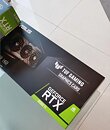
NVIDIA: Gamers Spend $300 More on Ampere GPUs Than Previous Generations
NVIDIA at its Annual Investor Day announced that the company's coffers are in better shape than ever. And while the company has many baskets from which to pull proverbial profits, the company's gaming division remains its biggest source of income. On its presentation, NVIDIA clarified that gamers are spending on average $300 extra per desktop Ampere product compared to previous graphics product generations. That fact, the company says, has resulted in an average increase in product ASP (Average Selling Price) to the tune of 13% per year in the last five years.
Paired with the increase in graphics products' ASP (meaning NVIDIA brings in more money per sold graphics card) is an increase in the number of graphics cards shipped to customers - at a rate of 11% more graphics cards being sold annually. So NVIDIA is not only selling more expensive graphics cards; they're selling more of them as well. The company expects its financial results to keep steadily improving, even as more and more gamers join the fold. According to the company, the last five-year period saw an average of 50 million additional gamers entering the market per year - and there's no expectation of that figure slowing down.
Paired with the increase in graphics products' ASP (meaning NVIDIA brings in more money per sold graphics card) is an increase in the number of graphics cards shipped to customers - at a rate of 11% more graphics cards being sold annually. So NVIDIA is not only selling more expensive graphics cards; they're selling more of them as well. The company expects its financial results to keep steadily improving, even as more and more gamers join the fold. According to the company, the last five-year period saw an average of 50 million additional gamers entering the market per year - and there's no expectation of that figure slowing down.






















































